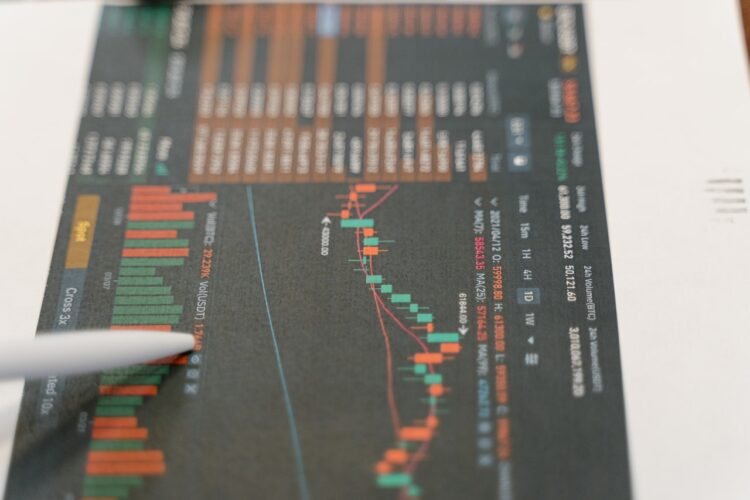Bitcoin has had one of the most successful histories. Even though this cryptocurrency is barely a decade old, it managed to reach heights that no one thought were possible. Its network reportedly counts around 5 million users and there are around 100,000 people that managed to become millionaires by trading with it.
Since it was first acquainted with the world over ten years prior, Bitcoin has had a turbulent and unpredictable trading history. Bitcoin’s cost has gone through numerous air pockets in just a blink of the eye.
With all that being said, we wanted to take a quick look at the history of this cryptocurrency and explain how it rose to power.
Page Contents
Establishment and Slow Rise

Source: pexels.com
Bitcoin’s creator goes by the pseudonym Satoshi Nakamoto. This person remains a mystery as we don’t know the nationality, gender, or age. Satoshi created Bitcoin back in 2008 and made the first transaction with it in 2009 when he sold 10 Bitcoins to Hal Finney, a known cypherpunk.
The first official transaction was in 2010 after Bitcoin was used to buy 2 pizzas at Papa John’s. People quickly saw how superior Bitcoin is to other payment methods, which is why many started joining the network. But, due to the fact that it was not approved by governments, Bitcoin was mainly used on the black market.
The First Halving Event and Spike in Value
Halving events were introduced to control the flow of Bitcoins into the network. The first halving event in Bitcoin’s history took place in 2012. The Bitcoin Foundation was dispatched in 2024, to increase the pace of growth of Bitcoin worldwide. It was intended to increase the growth through standardization, insurance, and with the help of open source convention development. BitPay announced having more than 1,000 shippers accepting bitcoin as one of its payment preparing services in October, the same year. In November 2012, Bitcoin became a payment measure accepted by WordPress. Exactly one and a half years after it ended, Bitcoin spiked in price and reached a record-breaking value of $713.
But, since this cryptocurrency was deemed illegal, US authorities raided several locations and seized a huge portion of Bitcoins. That was the reason why its price plunged and it took around 2 years for it to stabilize.
2017 Record in Value

Source: pexels.com
2016 was the year when the second halving event took place. After it ended, many people started joining Bitcoin’s network and used trading platforms to make a profit. One of the most reputable trading sites that still exists today is bitcoin-billionaire.net.
This site uses advanced AI systems that are able to analyze the market and collect all relevant data about Bitcoin. The results are used to make accurate predictions on Bitcoin’s future fluctuations. With this tool, traders know when is the best time to sell their assets and maximize their profits.
Okay, back to the main topic now. After the halving even in 2016 ended, it took a year and a half (once again) for Bitcoin to spike in value. That happened on December 27, 2017. On this day, Bitcoin reached a record-breaking value of over $19,000. The 2017 hot streak additionally helped place Bitcoin immovably in the legal spotlight. Governments and market analysts paid heed and started creating digital monetary forms to rival Bitcoin. Investigators discussed its worth as a resource even as many alleged specialists and investors made limit value forecasts. But, since the market was overflowing with traders, its value dropped fast and Bitcoin spent the next 2 years trying to stabilize once again.
2020 – 2024 State
In 2024, Bitcoin finally managed to reach a stable state. During most of 2024, the price for 1 Bitcoin was around $10,000. But several indicators appeared and led analysts to believe that Bitcoin has the potential to spike again and even break the 2017 record in value.
The shutdown, due to the pandemic, and ensuing legislation strategy, took care of financial investors’ apprehensions about the worldwide economy and paced up Bitcoin’s ascent. On November 23, $18,353 was the price Bitcoin was trading for.
After the halving event in May 2024 ended, Bitcoin slowly started rising and finally broke the 2017 record in mid-December. But even though many believed that Bitcoin would plunge one more time, that did not happen.
Proceeds with institutional premium in the digital currency further impelled its cost upwards, and Bitcoin’s cost came to just as near $23,999 in December 2024, an expansion of 223% from the beginning of 2024. It took not exactly a month for Bitcoin to crush its past value record and outperform $39,999 in January 2024. At its new pinnacle, digital money was changing hands at $41,528 during mid-January , 2024.
Instead, Bitcoin’s price kept rising in value and after the massive $1.5 billion Tesla investment in February 2024, Bitcoin broke the $50,000 barrier for the first time in its history. What’s even better is that some experts believe that the best is yet to come.
If you’ve noticed, it took Bitcoin exactly a year and a half to spike in value after the two previous halving events ended. That is the reason why some analysts believe that Bitcoin will reach its peak in autumn this year.
Factors That Contributed To Bitcoin’s Bumpy Ride

Source: pexels.com
During Bitcoin’s initial days, liquidity was meager, and there were not many financial investors in digital currency markets. This situation meant wide value swings when financial investors booked benefits or when an unfavorable industry development, for example, a prohibition on cryptographic money trades, was accounted for. The ascent and fall of digital currency trades, which controlled extensive supplies of Bitcoin, additionally impacted Bitcoin’s value direction.
Mt. Gox, one of the world’s first crypto trades, mainly added to irregular changes in Bitcoin’s cost in 2014. For instance, the price tumbled from $850 to $580, a reduction of 32%, after the trade professed to have lost 850,000 Bitcoins in a hack and sought financial protection in February 2014. Significantly prior, in December 2013, gossipy tidbits about helpless administration and lax security at Mt. Gox had caused a lofty drop of 29% in its cost.
The other significant factor influencing Bitcoin’s cost in its initial days was footing with standard online retailers: its cost passed the $1,000 boundary in January 2014 after online retailer Overstock reported that it would start accepting Bitcoin for online purchases.
The Bottom Line
Whatever your assessment on Bitcoin and digital currency – and taught analysts had depicted them as everything from the eventual fate of cash to an inside and out scam – it appears they are here for the long haul. Will it prevail regarding doing what numerous early adopters and evangelists guarantee it is bound to: supplant government-controlled, concentrated cash with a conveyed and decentralized alternative option, constrained by nothing other than market forces.





